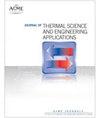Multi-physical Field Numerical Simulation of Electromagnetic Heating in Heavy Oil Reservoirs with Different Well Configurations
IF 1.4
4区 工程技术
Q3 ENGINEERING, MECHANICAL
引用次数: 0
Abstract
Electromagnetic (EM) heating effectively reduces oil viscosity and improves oil recovery rate by heating oil layers with EM radiation. However, the selection of well configurations for EM heating oil recovery has yet to be thoroughly studied. This article uses numerical simulation methods to study the effect of different well configurations on the oil recovery efficiency of EM heating heavy oil reservoirs. A complex EM heating model coupled with an EM temperature seepage field was established to simulate two different well configurations: vertical and horizontal wells. The results indicate that the horizontal well configuration is more efficient in heating heavy oil reservoirs in the same area than the vertical well configuration. Vertical heating wells facilitate the swift creation of a flow channel around the wellbore due to the direction of heavy oil flow coinciding with that of the well. However, the horizontal configuration takes longer for a flow channel to form. Despite this, the temperature distribution in the reservoir under the horizontal configuration is more uniform, and high temperatures do not accumulate around the heating wells. On the other hand, with a vertical configuration, the heat accumulates at the bottom of the well along with the flow of heavy oil. Increasing EM power and frequency can lead to a rise in reservoir temperature and facilitate the flow of heavy oil. However, it is important to note that beyond a certain point, the benefits of increased power and frequency become limited and may result in an excessively high temperature of heavy oil.不同油井配置下重油储层电磁加热的多物理场数值模拟
电磁(EM)加热通过电磁辐射加热油层,可有效降低石油粘度,提高采油率。然而,电磁加热采油的油井配置选择还有待深入研究。本文采用数值模拟方法研究了不同油井配置对电磁加热重油油藏采油效率的影响。建立了一个复杂的电磁加热模型,并结合电磁温度渗流场,模拟了两种不同的油井配置:竖井和水平井。结果表明,在同一地区,水平井配置比垂直井配置加热重油油藏的效率更高。由于重油流动方向与油井方向一致,垂直加热井有利于在井筒周围迅速形成流动通道。然而,水平构造需要更长的时间才能形成流道。尽管如此,水平构造下储油层的温度分布更加均匀,加热井周围不会积聚高温。另一方面,在垂直构造下,热量会随着重油的流动积聚在井底。提高电磁功率和频率可导致储油层温度上升,促进重油流动。但必须注意的是,超过一定程度后,增加功率和频率的好处就会变得有限,并可能导致重油温度过高。
本文章由计算机程序翻译,如有差异,请以英文原文为准。
求助全文
约1分钟内获得全文
求助全文
来源期刊

Journal of Thermal Science and Engineering Applications
THERMODYNAMICSENGINEERING, MECHANICAL -ENGINEERING, MECHANICAL
CiteScore
3.60
自引率
9.50%
发文量
120
期刊介绍:
Applications in: Aerospace systems; Gas turbines; Biotechnology; Defense systems; Electronic and photonic equipment; Energy systems; Manufacturing; Refrigeration and air conditioning; Homeland security systems; Micro- and nanoscale devices; Petrochemical processing; Medical systems; Energy efficiency; Sustainability; Solar systems; Combustion systems
 求助内容:
求助内容: 应助结果提醒方式:
应助结果提醒方式:


